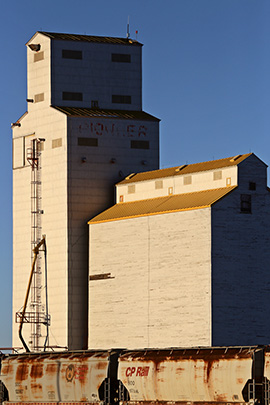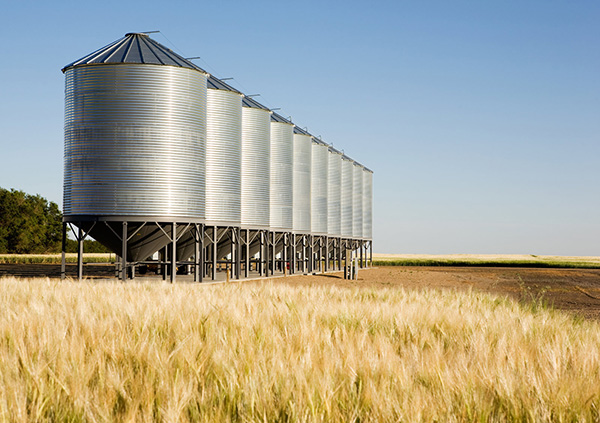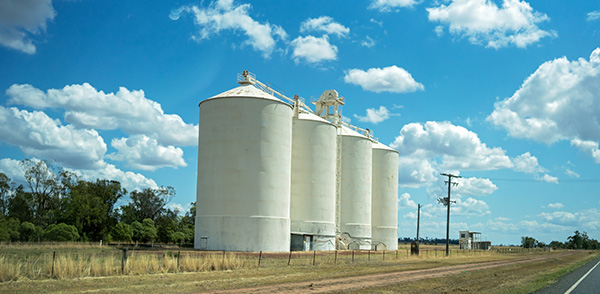Learn about your rights to compensation after a grain entrapment accident at work in Georgia
Agriculture is a staple of Georgia’s economy, contributing approximately $69.4 billion annually to the state’s economy and providing more than 352,430 jobs. In fact, about 1 in 7 Georgians work in agriculture, forestry or related fields, with a large number working in Georgia’s many grain handling facilities.
Unfortunately, while these jobs lead to a flourishing economy, they also often lead to injuries, illness and death for workers, particularly in grain operations where grain entrapment is a leading cause of preventable work fatalities.
If you or a family member suffered an injury or death from grain entrapment, you may be entitled to significant compensation through a workers’ compensation claim.
What are grain handling facilities?
Between the farmer’s cornfield and the consumer’s table, the supply chain consists of many links. Grain handling facilities store, process and ship grains such as wheat, corn, barley, oats, and soybeans along the agricultural supply chain and include the following types of facilities.
Grain elevators
Grain elevators are the largest grain handling facilities where farmers deliver their grain to market. In small rural towns, they are the tallest structures by far. They include many tall narrow cylindrical silos surrounded by support machinery and equipment.
A farmer, having harvested grain in the field, takes it to a grain elevator, where it’s stored until the farmer accepts an offer to buy it. Grain elevators employ numerous workers who use heavy machinery. Hence, there are many hazards and causes of employee injuries.

Grain bins
Grain bins are commonly seen in the countryside and frequently labeled “Butler,” a popular builder of grain bins. The bins are usually on the land of the grain farmer. Sometimes, such bins are owned jointly by a group of neighboring farmers.
They’re typically made of gray metal, no more than 2 or 3 stories high, and are cylindrical with a peaked roof and auxiliary devices for climate control. They’re used by the farmers to store their grain before they truck it to a grain elevator to market. Farmers who use grain bins save the fees they would otherwise pay the grain elevator for storage.
The system uses an auger (large screw) inside a long tube to lift the grain from the farmer’s truck to the top of the bin and dump it. When the farmer is ready to take the grain to an elevator, it’s removed from the bottom of the bin using gravity to move it with the assistance of an auger. The auger and gravity are the principal sources of worker injuries at grain bins.

Silos
Historically, every farm had a silo for grain storage. They were tall narrow cylindrical structures, usually made of concrete and topped with a dome. They didn’t work very well to preserve the quality of the grain for any length of time. They have been replaced by metal climate-controlled grain bins. Today, the silos that do remain are often used to store and ferment organic material, such as corn stalks used for livestock feed.

Grain accident statistics
According to an article published in South Dakota News Watch, between 2005 and 2015, there were an average of 35 reported grain-handling accidents annually. About 65% of those were fatal.
Grain entrapments and fatalities have been on the rise in recent years, growing by more than 65% in this 3-year period:
- In 2017, there were 23 grain entrapments that led to 12 deaths.
- In 2018, there were 30 grain entrapments that led to 15 deaths.
- In 2019, there were 38 grain entrapments that led to 23 deaths.
What makes grain handling facilities so hazardous?
Grain stored in tall cylindrical towers is like quicksand. A worker who falls or steps into the silo stands a good chance of sinking into the grain, and struggling only causes them to sink deeper, resulting in asphyxiation.
The danger of grain entrapment
Grain entrapment (engulfment accident) is the leading cause of death from grain storage accidents. They are most common in “flowing grain.” The storage system works by depositing new grain at the top of the bin or silo and removing it from the bottom. When grain is removed, gravity causes the grain from top to bottom to flow toward the removal point. Anybody standing at the top will be sucked down by an extreme force.
Workers often climb into a grain bin or elevator to loosen grain that is not flowing because the grain is crusted, wet, spoiled or frozen. Out-of-condition grain is a principal cause of obstructed flow. When the blockage is removed the grain suddenly flows with tremendous force, which can drag a worker down. The force is most severe when the grain removal devices are activated at the bottom and the grain is flowing throughout the silo.
Grain flow entrapments take only seconds to become deadly. An average worker weighing 160 lbs will sink 2 feet in 5 seconds, 3 feet in 10 seconds, 4 feet in 15 seconds, 5 feet in 20 seconds, and 6 feet in 25 seconds. By then, they will likely suffocate.
The weight bearing on the victim is also unbearable. At 3 feet, it will require 300 pounds of force to extract them. At 5 feet, it will require 625 pounds. At 6 feet, it will require 900 lbs of force to pull them out if they’re still alive.
Common grain accident injuries
In addition to suffocation, other injuries associated with grain storage operations include the following:
- Spinal cord injuries
- Respiratory problems from grain dust
- Burns from explosions and electrical hazards
- Broken bones
Leading causes of grain entrapment
The 4 leading causes of death by grain entrapment include the following:
- Grain flow. Grain flows are caused by the removal of grain from the bottom of a silo with the assistance of an auger. A standard 10-inch auger pushes 85 cubic feet of grain per minute. With the removal of grain at the bottom, gravity pulls the weight of the entire load from above with a powerful force to fill the empty space. Anybody at the top is powerless to resist it. Within seconds they will be submerged and suffocate.
- Collapse of a grain bridge. Grain bridges form at the top of the silos when the grain crusts together. Out-of-condition, damp and wet grain can mold and form a hard crust on the top surface. Loose grain beneath it will recede, leaving a cavity as grain is removed at the bottom. A grain bridge appears firm but is susceptible to collapse when stepped on.
- Avalanching grain wall. A grain wall avalanche occurs when damp and moldy grain sticks to the walls of the silo or bin. A worker might try to bust up the wall to free it to be unloaded. Like a snow avalanche, the disturbance could bring the whole wall down on the worker, leaving them literally drowning in grain.
- Use of a grain vacuum. Grain vacuums are efficient tools used to transfer grain from a storage area to another location. If a worker drops the grain vacuum while it’s running, the grain can be sucked out from beneath them, causing them to quickly sink and become suffocated.
What steps should be taken to rescue someone from a grain bin?
Assuming a trapped worker is visible, your attempts to rescue them should include the following:
- Turn off all equipment for moving grain, including the auger.
- Direct someone to call 911, the fire department or other emergency rescue service.
- Throw a tether to the victim to keep them from sinking further.
- Turn on aeration fans to push air into the grain.
- If they’re only partially submerged, use material such as plywood or metal to build a retaining wall around them to prevent more grain from flowing toward them. There are also grain bin rescue tubes available for purchase that are specifically designed to quickly and easily protect workers during rescue.
- Once you establish a retaining wall, remove grain from around the victim with shovels, buckets or vacuums.
- Cut holes in the sides of the bin to unload the grain from the top if the victim is completely submerged.
- Once the victim is extracted, render immediate emergency care.
What can be done to reduce the hazards in grain handling facilities?
The following steps should be taken to reduce the risk of injuries associated with grain storage bins:
- Discourage workers from entering a grain bin, but when they must, instruct them to turn off all powered grain-moving equipment, including augers.
- Prohibit workers from walking on grain for the purpose of making it move.
- Require all workers to wear a body harness before entering the bin.
- Always have an observer posted outside the bin while a worker is inside.
- Train all workers who are likely to have a need to enter a bin on safety habits.
- Before entering the bin, test the inside air for combustible gasses and ensure the presence of enough oxygen.
- Vent any hazardous air.
Lack of training: A dangerous & costly oversight
Learn how insufficient training negatively affects employees and employers alike.
Georgia workers’ compensation and death benefits
Workers’ compensation is a state-administered no-fault insurance program that most employers are required to carry for their employees. It covers workers for injuries or illnesses suffered while doing their job.
In Georgia, most employers with 3 or more employees must carry workers’ comp insurance. They are subject to severe civil penalties if they fail. In some cases, there can be criminal penalties.
Workers’ comp benefits include the following:
- Payment of medical expenses
- Lost wages while you recover from your injuries
- Compensation for permanent and temporary disabilities
- Death benefits for surviving family members
To qualify for Georgia workers’ comp benefits, you must be an employee and not an independent contractor, and your injury must occur in the course of your regular employment. You do not have to prove that your employer was at fault to get compensation.
If death results from your injury, your surviving spouse and children will receive the following benefits:
- Funeral expenses with a cap
- Medical expenses incurred for care before death occurs
- A share of the compensation that the employee would have received, had they survived, for total disability for a limited period
Many grain facility deaths occur on family farms that do not employ 3 or more workers. In most cases, workers are either the farmer’s family members or independent contractors. In those cases, workers’ comp benefits may not be available.
However, the surviving families of a deceased grain-bin worker might have a right to compensation from the farmer or third party, such as an equipment manufacturer. An experienced work injury attorney can help you determine if you qualify for workers’ comp benefits and which parties may be liable in your case.
Contact a Georgia workers’ compensation attorney
If you’ve been injured in a grain accident or any other work-related accident in Georgia, contact the experienced Atlanta worker injury attorneys at Gerber & Holder today. Our attorneys have over 75 years of combined experience helping injured workers across Georgia recover maximum compensation after an injury. We’re here for you and ready to fight for the compensation you deserve.


